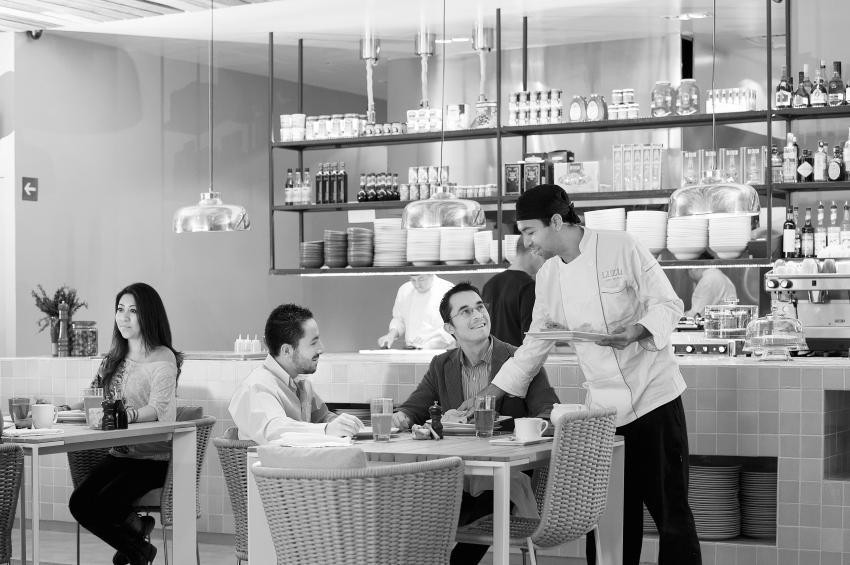Finding the Food Safety Training Program that is Right for You
… if my business were ever the source of a foodborne illness outbreak, I would certainly want to know that I had done everything in my power to protect my guests and having trained my employees who work on the front lines with the food I serve in my business would be the very least that I could do.
However, I don’t know about you, but if my business were ever the source of a foodborne illness outbreak, I would certainly want to know that I had done everything in my power to protect my guests and having trained my employees who work on the front lines with the food I serve in my business would be the very least that I could do. Thus, below is a list of all organizations who are currently certified to offer the food safety certification exam and some basic information about the program. Accredited Food Manager Examinations[1]
| Name of Organization | Website | Format | Cost | Other Notes |
|---|---|---|---|---|
| AAA Food Safety | https://aaafoodhandler.com/food-manager-certification | Training: Online Exam: Remote proctoring | Training & Exam: $99.95 Exam only: $69.95 Training Only: $49.95 | The $99.95 rate only provides one attempt to pass the exam. There is a “Diamond Package” available for $119.95 that provides one free retreat. |
| WFSO Academy | https://academy.worldfoodsafety.org/#/fpm | Training: Online Exam: Remote or in-person at test site | Exam, remote proctoring: $95.00 Exam, in-person at test site: $125.00 Training: $12 – $95.00 | Study courses are priced individually but can also be purchased in a comprehensive bundle. Access to the course is available for one year. |
| Certus / StateFoodSafety.com | https://www.statefoodsafety.com/ | Training: online Exam: In-person or online, remote proctoring available | Training & Exam: $78.00[2] + proctor fee (varies, usually around $50) Training only: $65.00 Exam only: $28.00 plus proctor fee (varies, usually around $50) | If you fail the exam, you must repurchase a new exam, however the course remains free. Examinee must repurchase the exam and register for an exam session for each attempted retake. |
| 360training.com, Inc. | https://www.360training.com/learn2serve | Training: Online Exam: Remote proctoring, cost included with both the training and exam package and the exam only option. | Training & Exam: $121.00 Exam only: $69.99 | Students allowed two attempts to pass the exam with no additional cost. Not approved for New York City |
| My Food Service License | https://myfoodservicelicense.com/ | Training: Online Exam: Remote proctoring. | Training & Exam: $199.00 Exam only: $100.00 Training only: $161.00 | Normal prices are reported. At the time of the audit, the training and exam were “on sale” for $169.00 and the training only was $115.00. |
| National Registry of Food Safety Professionals | https://www.nrfsp.com/ | Training: It appears this is designed for in-person training, but self-study options are allowed. There is an affiliate network that provides online training for an additional cost. Exam: Online or in-person | Training & Exam: $70.95 Self-Study Training Materials: $23.00-$103.95 Exam only: $80.00 | Of accredited programs, this was the most complicated of the websites to navigate in order to determine what you needed to purchase to obtain the certification. |
| National Restaurant Association | https://www.servsafe.com/ | Training: In-person or online Exam: In-person or online, remote proctoring available. | Training & Exam: In-person costs will vary; online $179.00 Exam only with online proctoring: $99.00 Online Exam Voucher only: $36.00 | If you fail the exam, you must repurchase a new exam, however the course remains free. |
| Trust20 | https://trust20.co/ | Training: Online, remote proctored. Exam: Online | Training: $90.00 Exam only: $90.00 | If you fail the exam, you must repurchase a new exam. The training is available, but only results in a “certificate”, not certification. There does not appear to be a combined training/exam package with a reduced rate. |
| Responsible Training | https://www.responsibletraining.com/ | Training: Online, remote proctored by Examity. Exam: Online | Training & Exam: $119.99 Exam only: $64.99 | Students allowed two attempts to pass the exam with no additional cost. |
| The Always Food Safe Company, LLC | https://alwaysfoodsafe.com/en/ | Training: Online Exam: Remote proctoring, cost included with both the training and exam package and the exam only option. | Training & Exam: $78.00 + Remote Proctor Fee of $48.00 Exam only: $28.00 + Remote Proctor Fee of $48.00 | Students allowed two attempts to pass the exam with no additional cost. |
[1] Information is current as of 9/26/2023 [2] Fee is specific to the state and, in some cases, the county. It appears that most are $78.00.
READ MORE POSTS
Food Safety for Pork – Part 2
Continued from part 1...
Food Safety for Pork – Part 1
If you haven’t tasted pork lately because you are not a red meat fan (or the other white meat), there are a few changes in the nutritional value of pork, the pork cooking temperatures, and the variety of ways we consume it. The amount of pork the average American consumes hovers around 50 pounds a year. Although pork is the number one meat consumed in the world, there are some religious restrictions on consumption of pork. U.S. consumption of pork dropped during the 1970s, largely because its high fat content caused health-conscious Americans to choose leaner meats. Today's hogs have much less fat due to improved genetics, breeding and feeding.
The Cold Chain in the Hot Summer Months
Keeping foods at proper cold holding temperatures (between 28°F and 41°F maximum or 0°F for frozen food) from the food manufacturers to your customers has to be one of our strongest links to safe food. Sometimes that is referred to in the food industry as “maintaining the COLD CHAIN”. Any slip ups in the cold chain, and we have a weak link. If you accept the food, you have greatly increased your foodborne illness risk and compromised your food quality.









